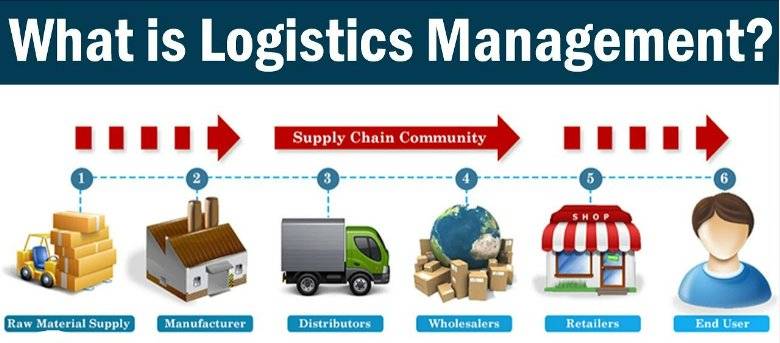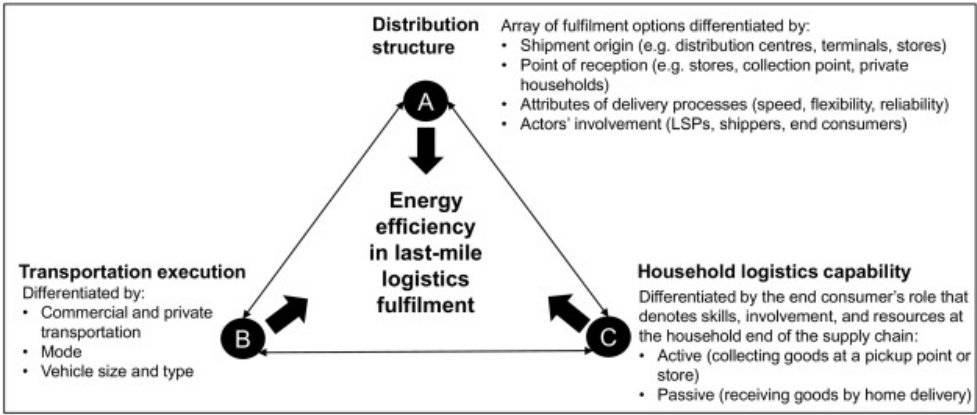The demand for sustainability in logistic operations is increasing faster than ever. Contrary to the belief that cutting costs in the logistics department can serve more profits to a business, it’s quite the opposite now. With increasing environmental awareness among business leaders and the public, sustainable logistics is serving as the key to keeping your company current and relevant.
Transportation of goods through freight trucks contributes to considerable carbon dioxide emissions in the atmosphere. The logistics industry is carrying out strategic efforts to reduce its carbon footprint while adhering to environmental laws and regulations. The good news, carbon dioxide emissions in the transport sector experienced a 9% decrease from 2021 to 2023.
Today, logistics businesses are innovating their operations by implementing AI and IoT solutions, optimizing logistic operations, using green fuels, and biodegradable packaging. This article will focus on the importance of sustainable logistics for a better brand reputation, enhanced environmental responsibility, and efficiency of supply chain operations.
Towards the end of this article, you’d learn the best sustainable logistics practices and ways to implement eco-friendly strategies without cutting costs while boosting business profits.
Let’s get started.
What Is Sustainable Logistics?

Sustainable logistics is an eco-friendly approach to cater to the supply chain processes and activities to reduce industrial carbon footprint. Furthermore, the concept of greener logistics encompasses the social and economic impacts that come with logistics operations.
For example, the reduction of CO2 emissions, noise, and water pollution, marine oil spills, or accidents during transit. Sustainable logistics rules are applied to an array of supply chain activities including the transportation, storage, management, and delivery of goods. To understand the concept better, let’s have a look at the components of logistics operations.
The logistics operations can be divided into 5 components:
- Storage: Raw materials or final goods are stored in warehouses before they are delivered to their destination.
- Packaging: Goods are packed into a uniform shape and size for easy storage. Packaging ensures the products remain safe until they’re delivered to their destination.
- Inventory: The good’s stock that’s retained in the warehouse for production, resale, or utilization. It simply refers to the flow of goods that goes in and out of the warehouse.
- Transportation: Within a supply chain, goods are transported from one stage to another including different modes like freight trains, huge containers, cargo shipping, air shipping, or road transits.
- Information and Control: Determining the demand and inventory of products as well as tracking the product packaging, shipment, and deliveries fall into the information and control component of the supply chain.

Why Is Sustainable Logistics Important?
With the rise of climate change and global warming, sustainable business practices are more in demand to overcome the environmental effects. The logistics industry is a large contributor to greenhouse gas emissions because of the involvement of the transportation of goods through different phases of the supply chain.
With increasing environmental awareness, transportation businesses are looking out for fuel-efficient vehicles and diesel alternatives. Electric cars are getting more popular among common users, however, more research is required to bring electric trucks for shipment purposes. It is predicted that electric vehicles are the future of logistics as they reduce carbon emissions, contributing towards a less carbon-intensive environment.
Large logistics providers have the responsibility and capacity to bring positive impacts by implementing a sustainable logistics strategy.
Companies that incorporate sustainable logistics in their business strategies get a competitive advantage as well as the following personal and environmental benefits:
- Reduction in emissions
- Savings in business costs
- Better company reputation
- Environmental responsibility
- New partnership opportunities
- Reduction in waste generation
- Efficient supply chain operations
- Higher environmental awareness
- Alignment with government legislation
- Enhanced attraction toward customers
- Preventing excessive burning of fossil fuels

6 Sustainable Logistics Strategies To Boost Business Success
Current businesses, be it eCommerce, finance, retail, medicine, or the tourism industry, are incorporating sustainable strategies to reduce environmental impact. This, in turn, attracts more customers, boosts sales, and reduces operational business costs. Let’s have a look at the top 6 sustainable supply chain strategies you can adopt to make your company more sustainable.
1. Data-Driven Logistic Operations
Today we have digital tools to streamline logistic operations. Whether you’re an eCommerce store or a logistics service provider, you can track cargo and trucks in real-time to provide the fastest transportation route using freight route planning tools. This approach minimizes carbon emissions while reducing fuel costs.
Moreover, the issue of empty mileage can be considerably reduced by loading trucks to optimum capacity. This also boosts the business profits as a maximum amount of goods are transported in a single round.
Some online businesses have integrated sustainable logistics tools that allow customers to change the delivery time as per their availability at the delivery address. For instance, if a person gets into an emergency trip somewhere at the due date of delivery, he can change the delivery date to the next day or so.
The new transit time is updated in real-time via the database management solution of the logistics ecosystem. This saves the cost, time, and emissions from a wasted delivery trip.
Similarly, if eCommerce stores selling event or circumstance-focused goods like Julbie and GreenSupply integrate advanced logistics tools to monitor and track customer deliveries in real time, they can make an efficient shipment procedure and positive brand identity. Moreover, the risk of delayed shipments and wrong deliveries can be considerably reduced.
2. Setting Up Pop-Up Warehouses
With the increasing emissions from last-mile eCommerce deliveries, logistics providers are stressing over pop-up warehouses. The reason is, low capacity warehouses are unable to fulfill unexpected customer demand because of insufficient storage area. A pop-up warehouse is a temporary warehouse that’s built in locations closer to the customers.
They are strategically built-in locations where customer demand is higher considering the city logistics. Moreover, customers can pick up their packages from their nearest warehouse to further reduce transportation emissions.
The cost of shipment from centrally located warehouses is more than renting a small pop-up warehouse, making the pop-up warehouses a sustainable logistics approach.
They help logistics and eCommerce businesses in the following areas:
- On-site retailing
- On-site pick-up points
- Reducing delivery time
- Reducing shipping costs
- Flexibility to eliminate logistics disruptions
3. Using Biofuels And Energy-Efficient Vehicles
Diesel trucks used in the transit of goods have about 13% more carbon footprint than gas-powered trucks. Since diesel is a cost-effective fuel, it’s majorly used by logistics providers. However, to overcome the environmental costs of diesel-powered transit vehicles, the use of biofuels is encouraged. Moreover, replacing old trucks with advanced energy-efficient trucks is another great option to control emissions.
Here are some eco-friendly options to incorporate into your logistics activities to reduce emissions:
- Fuel-efficient trains
- Shipping through sea
- Hybrid Trucks for last-mile deliveries
Similarly, leveraging renewable energy sources to perform inventory operations like warehouse lighting, load lifting electric equipment, aeration, and cleaning activities is a great way to cut down on carbon emissions from fossil fuels. The carbon footprint in distribution facilities like warehouses can be considerably reduced by implementing green energy options like:
- Bio-energy
- Solar-powered energy
- Wind-powered energy
- Water-recycling systems

4. Application Of IoT In Logistics
The logistics industry is now incorporating IoT sensors and devices to keep track of data related to freight speed, fuel consumption, and the driver’s behavior. Monitoring real-time logistic operations give flexibility in management and improvement. For instance, fuel consumption can be reduced by up to 10% if a cargo truck drives at a speed of 80km/h on highways.
Not only does this eco-driving approach help in minimizing the environmental footprint, but it also lowers the social and health impacts by preventing accidents and cargo spills.
Similarly, the sensors attached to the cargo wheels enable sustainable logistics and supply chain management to monitor the optimal tire pressure. For cargo trucks, a tire pressure of 105-110 PSI is ideal. The best part is, tire pressure sensors can help reduce fuel consumption by up to 12%. Moreover, they can increase the lifespan of tires as they’re subjected to continuous monitoring.
5. Green Packaging In Logistics Operations
Solid waste is a major environmental concern emerging from supply chain operations. From cardboard to paper, and plastic packaging, logistics is responsible for the majority of the paper waste. To overcome this issue, logistic providers and eCommerce brands are shifting towards eco-friendly packaging options.
Here are a few of the green packaging options your logistic business can adopt to comply with environmental well-being.
- Air pillow packaging
- Recycled plastic packaging
- Biodegradable plastic packaging
- Biodegradable seaweed packaging
- Biodegradable mushroom packaging
- Biodegradable cornstarch packaging
- Plastic-free corrugated bubble wraps
- Recycled paper and cardboard material
- Biodegradable package peanuts that dissolve in water
Besides the packaging waste, the logistics industry also leaves a considerable amount of office waste, mainly consisting of paper documents, records, and operational data sheets. A wide range of companies is shifting to online data keeping with a centralized system.
Similarly, eCommerce businesses and freight logistic providers allow users to track their order deliveries through online platforms like websites, and mobile apps. This saves time, money, and fuel emissions in visiting the logistics facilities in person. Have a look at the latest web design trends to make your online logistics business more competitive.

6. Optimization Of Logistics Processes
To run smooth logistic processes within a supply chain, businesses use yard logistics. SAP yard logistics software helps in creating a centralized system through which each department within the supply chain shares common databases. This makes transportation and warehouse departments interconnected and on the same page. This approach ensures efficient logistics operations throughout all phases of transit.
The risk of processing gaps and data breakage among logistics operations is minimized. Under the management umbrella of yard logistics, companies can reduce fuel waste, paper waste, and carbon emissions. Moreover, the management costs of hiring multiple data specialists, logistics accountants, warehouse data supervisors, and logistics assistants are considerably reduced.
2 Idea-Generating Applications Of Sustainable Logistics Operations
With the emergence of the “go green” campaign on print media, TV, social media, and podcast shows, the majority of customers are opting for brands that have leveraged green practices into their business. Sustainability in logistics can be achieved in multiple ways discussed below, however, we’ll study the real-life applications of green logistics to further our understanding.
A. DHL’s Green Logistics Approach
DHL has considerably increased its market competitiveness and sales with a market share of 42.3% in 2013 owing to its green logistics approach. The very first strategy is using recyclable packaging for deliveries to reduce solid waste.
Moreover, DHL is the pioneer in digitizing the logistics data leading to lesser paper waste. Having a centralized data system to track shipments, stock, and deliveries minimizes human errors and makes it easier to update data in real time. The data system works in the same way as eCommerce accounting software to streamline business sales without hassle.
Another great LDR sustainable solution is the introduction of reusable containers for the shipment process. The multipurpose returnable containers reduce packaging waste, ultimately cutting down on packaging costs, labor costs, and environmental impact.
The intelligent use of material resources alongside operational cost savings can help businesses thrive in this environmentally conscious world. New and progressing logistics companies must conduct quarterly, bi-annual, and annual business assessments to comply with environmental regulations.
B. Amazon’s Green Logistics Application
Amazon is a pioneer in adopting sustainable logistics to reduce the carbon footprint of its operations. With the feature of “Amazon Day” customers get to choose the day of their choice to receive deliveries. For instance, if you’ve ordered 3 parcels at separate times in a week, you can decide to receive them all together on a particular day.
Amazon also allows you to fix a day for all of your deliveries. For example, if you’re available at home only on Saturdays, you can schedule all deliveries for Saturday. This way, the fuel costs are minimized as well as the environmental costs of burning fossil fuels.
Moreover, the Amazon Key in-home, in-car, and in-garage features let prime users get their deliveries or groceries inside their homes, garage, or car trunks. This, without having customers around their place. This minimizes delivery returns due to customers’ unavailability at their homes.
Amazon also serves as a pioneer in offering drone deliveries in some parts of the UK. By implementing these green logistics strategies, Amazon can cut packaging and shipping costs, boosting its profits while giving it a competitive edge in the market.
C. Nike’s Green Logistics Approach
Nike comes at the top of the list of international brands that have incorporated sustainable strategies in logistics and supply chain operations. Nike uses advanced AI and machine learning to predict customer demand per location. This enables them to build pop-up warehouses at locations where customers are likely to make purchases.
This approach helps cut down the environmental and monetary costs of long-distance deliveries. Moreover, the following Nike’s innovative delivery options come in handy to promote green logistics.
- Ship to store option
- Pick-up in-store option
- No rush shipping option
- Online purchasing option
- A direct order drop option
Furthermore, Nike’s supply chain operations are semi-automated with the use of around 1000 collaborative robots that help in sorting out products, packaging, and moving products within the warehouse facilities. This increases work efficiency as well as saves resources like electricity, gas, and labor activities.
As more work is done in less time, the environmental impact is considerably reduced. Additionally, Nike isn’t lagging when it comes to green packaging materials for product shipment. The international brand uses recycled pop-up cartons to reduce paper waste.
Additionally, Nike uses inventory optimization solutions to make data-driven decisions for forecasting consumer behavior and demand. This helps in making strategic and sustainable business choices and cuts down the cost of manufacturing excessive products.
Conclusion
Current businesses are facing higher demand for eco-friendly operations as customers are getting conscious of sustainable living. Moreover, brands have to keep up with the environmental laws to maintain positive brand identity and attract more customers.
The logistics sector, in particular, can have a great environmental impact if its operations are not managed sustainably. Packaging waste, fossil burning, carbon dioxide emissions, and noise pollution are some of the major concerns as the products move through different phases in the supply chain practice.
By incorporating a sustainable logistics strategy, brands can improve their reputation, and boost revenues while cutting down the nonrenewable fuel costs as well as social and environmental impacts.
We’re listing the best 6 green strategies for boosting your logistics business as a quick recap:
- Data-Driven Logistic Operations
- Setting Up Pop-Up Warehouses
- Using Biofuels and Eco-friendly Vehicles
- Application Of IoT In Logistics
- Green Packaging in Logistics Operations
- Optimization of Logistics Processes
Looking out for a sustainable logistics provider to kickstart your business? Look no further than SeaRates. We provide the comfort of the shortest transit times at the lowest rates possible. Our smart logistics solutions keep our clients updated on cargo delivery in real time while we take care of the transportation and insurance side of things with sheer transparency.

